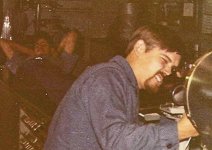Bill,
You have to help me out here. The nitrogen gas in the bin is at 0.2 to 0.4 atmosphere pressure. How cold does it has to be outside to create the vacuum so the moisture can enter? To create such a vacuum should suggest (at least) the seals are still working.
Jan
Hi Jan:
Even as geeky as I can sometimes get, I don’t know the answer to your question.
I do know the vacuum does not become problem, until a seal IS broken. Even so, I can give you some information from the running of a real-world optical repair shop.
My best binos were sold to retired birders and commercial fishermen. The fishermen outnumbered the birders about 6 to 1.
I could save the fishermen $30 to $50 by NOT filling the bino with nitrogen! I experimented. First, it is good to remember that purging a bino has nothing to do with PRESSURIZATION, as some people suppose. Fungus can’t grow in an inert gas environment, and dry nitrogen is often placed in higher quality instruments so that, if there’s ANY moisture, left in the instrument during manufacture or repair, fungus won’t be allowed to start. Sometimes, fungi can be easily removed, removing only the AR coatings from the lens or prism. Other times, you may remove the fungus only to discover it has severely etched the glass substrate.
I think purging and filling is a good idea. However, If found that if a bino was really sealed, it would not draw moisture, anyway!
During my last few years at Captain’s—and at the customer’s request—I would skip the purging / filling step. Of the hundreds of instruments treated, NOT ONE CAME BACK FOR REWORK! If you mix this with the pickiness of the commercial fishermen—they couldn’t afford to have their binos fog up 400 miles out into the Bering Sea—I think a much better case can be made for adequate sealing, as opposed to the wonders of nitrogen purging and filling.
Hope this helps,
Bill




